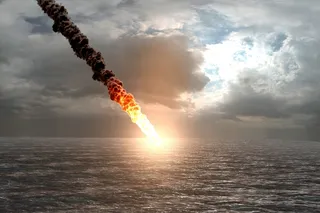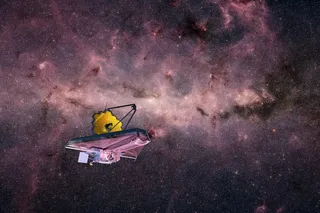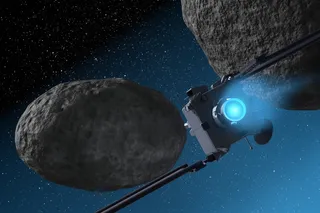“You haven’t seen Sunshine? What kind of self-respecting sci-fi geek are you?” With those words my friend Shelby persuaded, nay cajoled, me into watching the moving Sunshine. I already had the movie on DVD, so I would have gotten around to it... eventually. (Now we’re talking the 2007 movie about a mission to “restart” our dying Sun, not the 1999 movie about three generations of a Hungarian family in the early 20^th Century—though the latter featured Ralph Fiennes playing a triple role and was really very good.) I will admit up front that I found Sunshine quite enjoyable, so put any of my nit-picking in that context. In the DVD commentary director Danny Boyle

pointed out that, traditionally, in horror films the monsters attack from out of the darkness. His vision was to create a threat that attacks from out of the light instead. Very clever. At the same time, the movie was far from perfect. Having served as the Science Advisor on a TV series (or two), and having made the mistake of reading too many online fan comments about the shows on which I worked, it’s clear that people, in particular those with science backgrounds, tend to be particularly chagrined when they feel that it is their science that is being maligned or given improper respect. In this sense, apparently I’m no different. With a background in orbit dynamics, I had a few “Oh please!” moments in the movie that made me cringe—partly because they were in my field, but also because they were very easy to get right, and doing so would not have impacted the drama of the film one iota. It's this latter fact that I find bothersome in films. The premise of Sunshine is that our sun is dying 5 billion years prematurely, so the spacecraft Icarus is dispatched to deliver a stellar bomb to restart it—to “create a star within a star." Unfortunately, and for unknown reasons, the crew of Icarus fails to complete their mission. The movie follows the adventures of the crew of Icarus II seven years later attempting to succeed where Icarus failed. It has been said that, “If you see a gun on the wall in Act I, it should be used by Act III.” Therefore you just know that they’re going to encounter Icarus en route. We join the mission as it is already well underway: Icarus II is approaching Mercury for a “gravitational slingshot” to send it closer to the Sun. Wise choice by the filmmakers: A gravity assist would almost certainly be needed to get a spacecraft and her payload—in the case a payload the “mass of Manhattan Island”—to the Sun. It turns out that from an energy standpoint—where energy is roughly equivalent to the amount of fuel that you would need to expend—our sun Sol is THE single most difficult star in the entire Universe for a spacecraft to reach. Earth is moving fairly rapidly, just shy of 30 km/s in its orbit, and just like a figure skater whose spin rate increases as she pulls her arms in, the velocity of a spacecraft traveling inwards to the Sun increases the closer the spacecraft gets. (Remember that fact the next time you hear somebody say “Well I don’t know why we don’t just shoot all our garbage/toxic waste/spent nuclear fuel into the Sun.” It is actually easier to send it to Alpha Centauri, or Sirius, or even Wolf 359 that it is Sol, though it would take far far longer.) So a mission to Sol would be very difficult to do without gravitational assists from the planets Mercury and/or Venus. That aspect of the movie is perfectly reasonable! But before we get to Mercury to engage in the slingshot, there's a problem: When we first see Icarus II, her orientation suggests that she is following a trajectory whose path is radially inwards to the Sun. Because of a physical law called the conservation of angular momentum, Icarus II would actually have to follow a spiral-shaped trajectory inwards to reach the Sun, so at the 6:05 point in the movie when mention is made that they’re 55 million miles from Earth, that would have been the straight-line distance. They would have travelled much farther by that point in the mission. Then when we leave Mercury, we run into another issue. At the 18:05 mark in the movie, Captain Kaneda tells Icarus (also the name of the ship’s computer), “Icarus, please plot our trajectory following the slingshot around Mercury.” So far, so good. Later, though, we see a graphic of Icarus orbiting Mercury, and at the 23:20 point in the film, Icarus says, “Slingshot complete, Icarus leaving Mercury orbit.” Oops. As depicted in the film, the spacecraft actually performed several orbits around Mercury before “slingshotting” towards the sun. From an energy standpoint that's not only very wasteful, it would probably be counter-productive. In the case of Icarus II, it would have taken energy (fuel) to slow the spacecraft in order to enter into Mercury orbit, it would have taken more energy (even more fuel) to leave Mercury orbit, and the spacecraft would have realized no benefit—or more likely would have expended more fuel than saved—from Mercury’s gravity. A gravity assist, also known as a gravitational swingby, is performed in a single pass by the planet—like they did in Star Trek. Recall in the original series Star Trek episode “Tomorrow is Yesterday,” the crew of Enterprise performed a one-pass “slingshot” (technically a powered assist or Oberth Maneuver) around the Sun to gain the speed needed to return to their own time. They repeated this maneuver using a Klingon Bird of Prey in Star Trek IV: The Voyage Home. The only problem with the maneuver depicted in Star Trek is that there is no indication that the “slingshot” would allow them to attain a greater speed than they could by warp drive alone (we'll show later that it may have had some benefit had they been trying to escape the gravitational pull of the Milky Way Galaxy, but locally it would have done little). Further, in The Voyage Home, there was a concern expressed that the Bird of Prey could be captured by the gravity of the Sun. In short, and perhaps an entry for another time, a ship capable of faster-than-light travel simply could not be captured by the gravity of a sun the size of Sol unless it had a serious malfunction. The concept of gravity assist can be difficult to understand fully, even if you have a decent background in physics, so I can give Hollywood a pass on not getting it perfect. In Part II, though, we'll discuss how it's done and show an example where Hollywood got it right.













